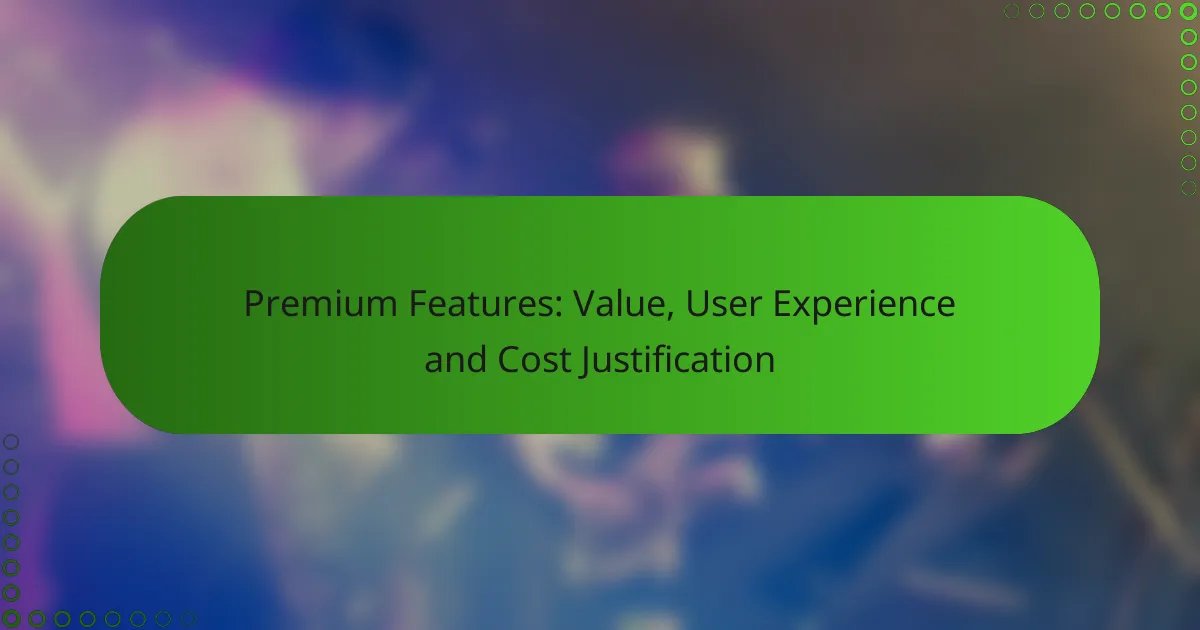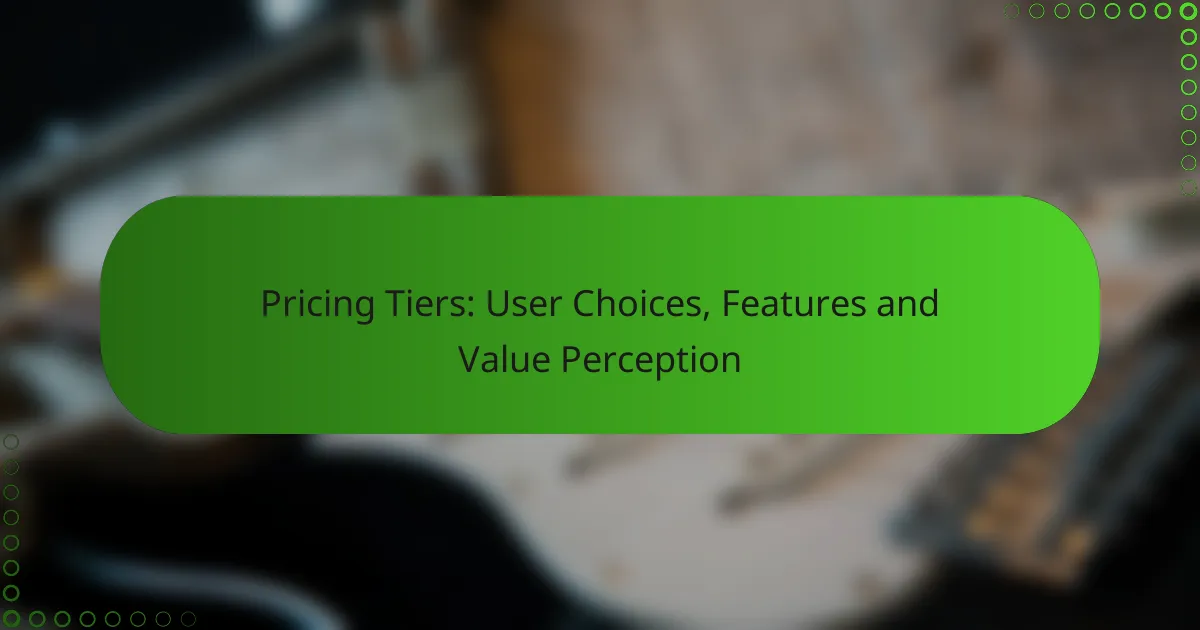Premium features play a crucial role in enhancing user experience by offering advanced tools and exclusive functionalities that elevate satisfaction and efficiency. By providing greater customization and security, these features deliver significant value that can justify their costs through increased productivity and improved user engagement.

What are the premium features that enhance user experience?
Premium features significantly improve user experience by providing advanced tools, customization options, and exclusive access that standard offerings typically lack. These enhancements can lead to greater satisfaction, efficiency, and security for users.
Advanced analytics tools
Advanced analytics tools allow users to gain deeper insights into their data and usage patterns. These tools often include features like real-time reporting, predictive analytics, and customizable dashboards that help users make informed decisions.
For example, a marketing platform might offer analytics that track user engagement across various channels, enabling businesses to optimize their campaigns effectively. Users should consider the learning curve and integration capabilities when selecting analytics tools.
Customizable user interfaces
Customizable user interfaces enable users to tailor their experience according to their preferences and workflows. This can include adjustable layouts, theme options, and personalized shortcuts that enhance usability.
For instance, a project management tool may allow users to rearrange task boards or create custom views to prioritize their work. When utilizing customizable interfaces, users should ensure that changes do not complicate navigation or functionality.
Enhanced security protocols
Enhanced security protocols provide users with greater protection for their data and privacy. Features may include two-factor authentication, end-to-end encryption, and regular security audits to safeguard sensitive information.
For businesses, implementing strong security measures is crucial for compliance with regulations like GDPR or HIPAA. Users should regularly review security settings and stay informed about updates to maintain optimal protection.
Exclusive content access
Exclusive content access offers users unique resources, such as premium articles, webinars, or specialized tools not available to standard users. This feature can significantly enhance the value of a subscription or service.
For example, a software platform might provide exclusive tutorials or case studies that help users maximize their use of the product. Users should evaluate the relevance and quality of exclusive content to ensure it meets their needs.
Priority customer support
Priority customer support ensures that users receive faster and more personalized assistance when issues arise. This can include dedicated support lines, quicker response times, and access to specialized support agents.
For instance, a software service might offer priority support for premium users, reducing downtime and improving overall satisfaction. Users should assess the availability and responsiveness of support services when considering premium options.
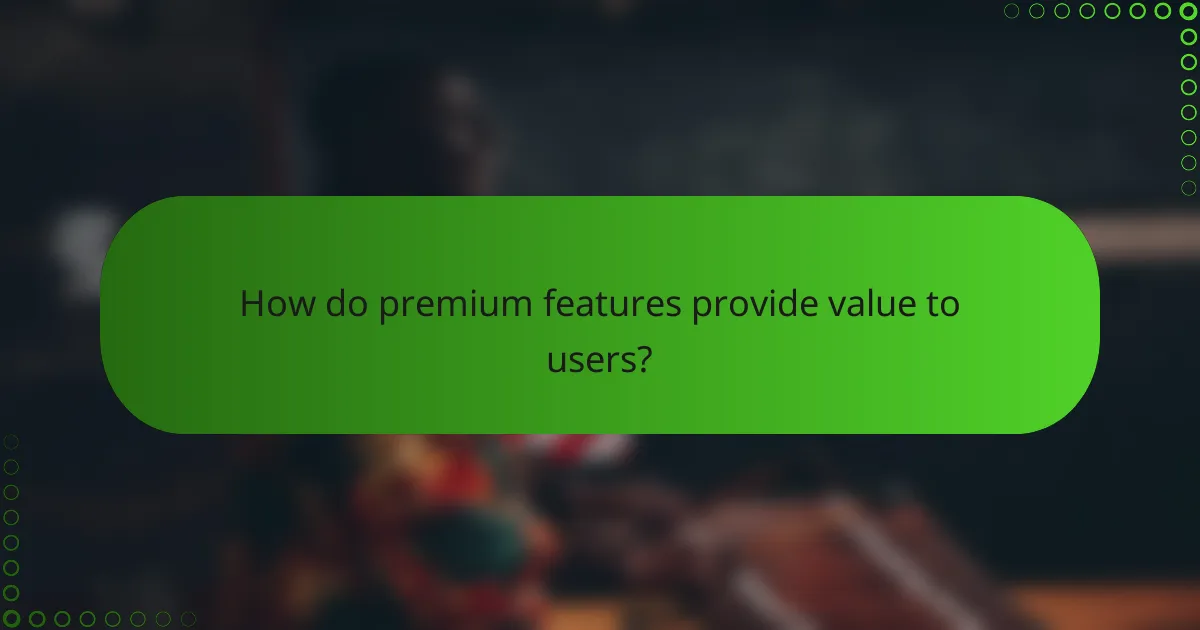
How do premium features provide value to users?
Premium features deliver value to users by enhancing their experience and offering functionalities that are not available in standard versions. These features often lead to greater satisfaction, increased productivity, and a more personalized interaction with the product.
Increased engagement rates
Premium features typically lead to higher engagement rates as users find more value in the enhanced functionalities. For instance, a premium app may offer advanced customization options that keep users actively involved, leading to longer session times and more frequent usage.
To maximize engagement, consider incorporating features that encourage user interaction, such as gamification elements or social sharing options. These can significantly boost user interest and participation.
Higher conversion rates
Offering premium features can result in higher conversion rates, as users are often willing to pay for additional value. For example, businesses that provide exclusive tools or services may see a notable increase in subscriptions or purchases when users recognize the benefits.
To improve conversion rates, clearly communicate the advantages of premium features through targeted marketing strategies. Highlighting testimonials or case studies can also help potential customers understand the value they would receive.
Improved user retention
Premium features can enhance user retention by providing ongoing value that keeps users coming back. When users feel they are gaining significant benefits from their investment, they are less likely to switch to competitors.
To foster retention, regularly update premium offerings and solicit user feedback to ensure the features meet evolving needs. This approach can create a loyal user base that appreciates continuous improvements.
Access to exclusive resources
Users of premium services often gain access to exclusive resources, such as specialized content, advanced analytics, or priority support. This access can significantly enhance their overall experience and effectiveness in using the product.
Consider offering a tiered resource system where users can unlock additional materials or tools as they engage more with the premium features. This not only incentivizes usage but also creates a sense of exclusivity that can be very appealing.

What is the cost justification for premium features?
Cost justification for premium features involves evaluating whether the benefits outweigh the expenses associated with these enhancements. Organizations must assess how premium features can lead to increased revenue, improved user satisfaction, or operational efficiencies that justify their costs.
Return on investment analysis
Return on investment (ROI) analysis measures the financial return gained from investing in premium features compared to the costs incurred. To calculate ROI, consider both direct revenue increases and indirect benefits such as customer retention or reduced churn rates. A positive ROI indicates that the premium features are financially justified.
For example, if a subscription service invests $10,000 in premium features and sees an increase in revenue of $15,000, the ROI would be 50%. This simple calculation helps in making informed decisions about future investments.
Cost-benefit comparison
A cost-benefit comparison involves weighing the expected benefits of premium features against their costs. This analysis should include both tangible benefits, like increased sales, and intangible benefits, such as enhanced brand reputation or user engagement. Prioritizing features that offer the highest net benefit can guide effective resource allocation.
For instance, if a premium feature costs $5,000 to implement but is projected to generate $20,000 in additional revenue, the net benefit is significant. Focus on features that provide the best balance of cost and benefit to maximize value.
Market pricing benchmarks
Market pricing benchmarks provide context for evaluating the costs of premium features by comparing them to industry standards. Understanding what competitors charge for similar features can help justify pricing strategies and ensure competitiveness. Researching market trends can reveal whether your pricing aligns with customer expectations.
For example, if similar services in your industry charge between $10 and $30 per month for premium features, setting a price within this range can enhance perceived value. Regularly reviewing these benchmarks allows for adjustments based on market dynamics and user feedback.
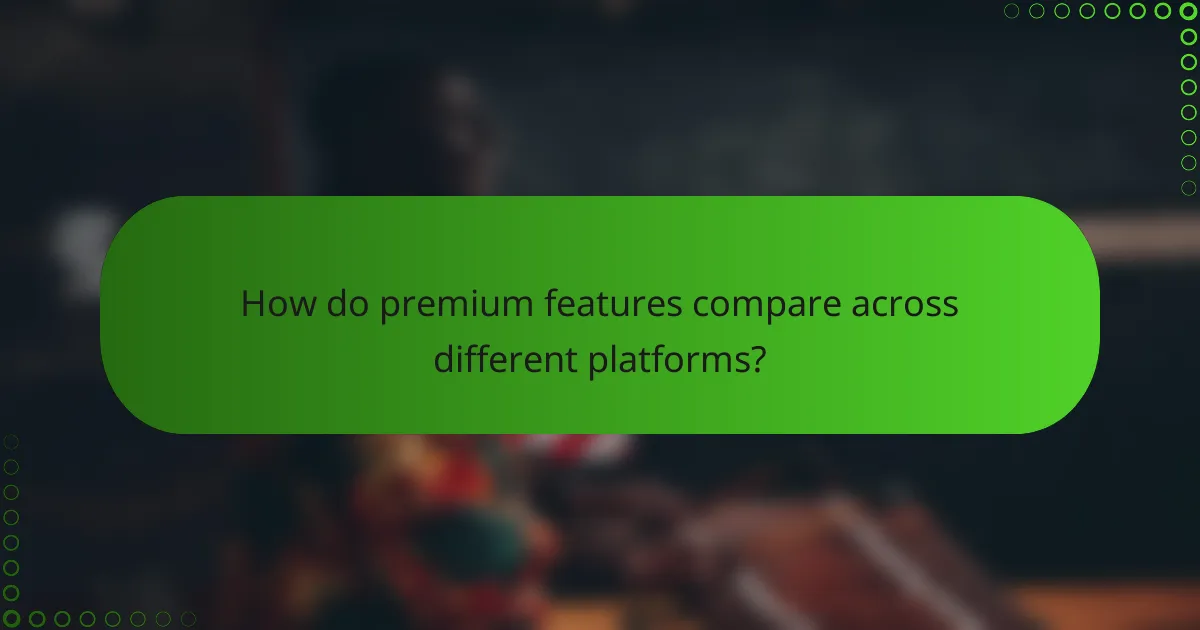
How do premium features compare across different platforms?
Premium features vary significantly across platforms, impacting user experience and overall value. Understanding these differences can help users make informed decisions based on their specific needs and budget.
Feature comparison of Adobe Creative Cloud
Adobe Creative Cloud offers a comprehensive suite of tools for creative professionals, including Photoshop, Illustrator, and Premiere Pro. Premium features often include advanced editing capabilities, cloud storage, and collaboration tools that enhance productivity.
Users can expect to pay a monthly subscription fee, typically ranging from $20 to $80, depending on the plan and features selected. Consider the value of tools like Adobe Stock and Behance integration when evaluating the cost.
Feature comparison of Microsoft 365
Microsoft 365 provides a range of productivity applications such as Word, Excel, and PowerPoint, with premium features like advanced data analysis, cloud storage via OneDrive, and enhanced security options. These features are designed to improve collaboration and efficiency in both personal and professional settings.
Subscription costs for Microsoft 365 generally range from $6 to $35 per month, depending on the plan. Users should assess their needs for additional features like Teams and SharePoint to justify the investment.
Feature comparison of Salesforce
Salesforce is a leading customer relationship management (CRM) platform that offers premium features such as advanced analytics, automation tools, and customizable dashboards. These features are crucial for businesses looking to enhance customer engagement and streamline operations.
Pricing for Salesforce can vary widely, typically starting around $25 per user per month and going up to several hundred dollars for enterprise solutions. Companies should evaluate the potential return on investment from features like AI-driven insights and integration capabilities when considering costs.
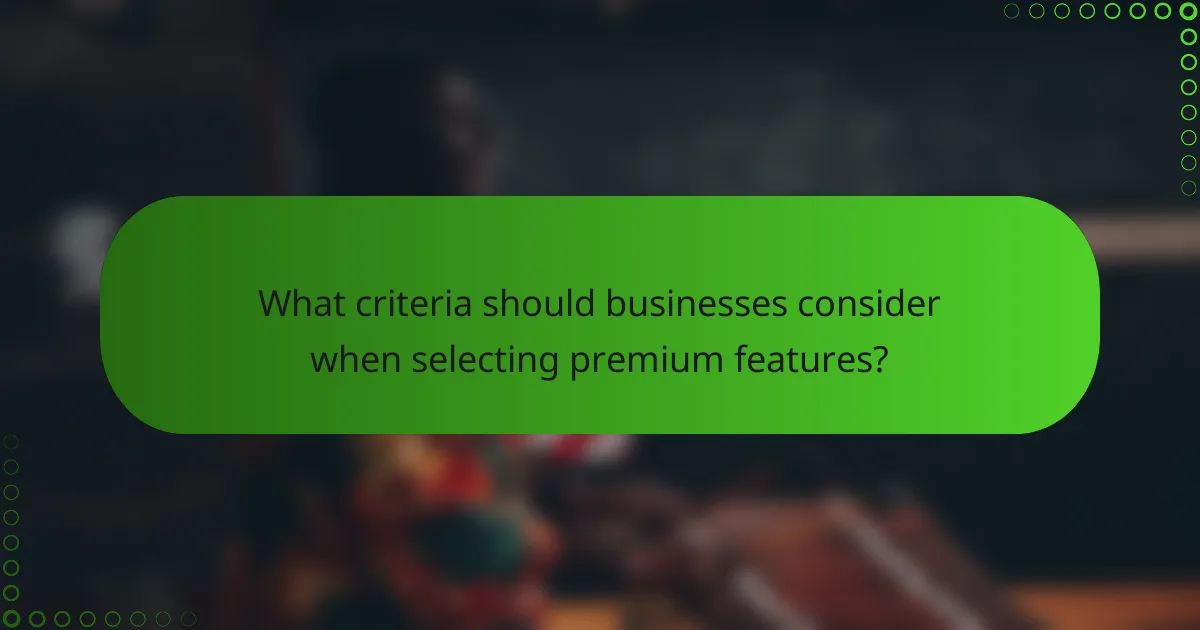
What criteria should businesses consider when selecting premium features?
Businesses should evaluate premium features based on user needs, cost-effectiveness, and the potential for enhancing user experience. Key considerations include the target audience, the specific benefits offered, and how these features align with overall business goals.
User demographics
Understanding user demographics is crucial when selecting premium features. Factors such as age, location, income level, and technology proficiency can significantly influence which features will be most appealing and useful to your audience.
For instance, younger users may prioritize innovative features like social sharing or gamification, while older users might value simplicity and accessibility. Tailoring premium offerings to meet the preferences of different demographic segments can enhance user satisfaction and engagement.
To effectively assess user demographics, consider conducting surveys or analyzing existing user data. This information can guide decisions on which premium features to prioritize, ensuring they resonate with your target market.






